Watercolor Brush Size Chart Free PDF!
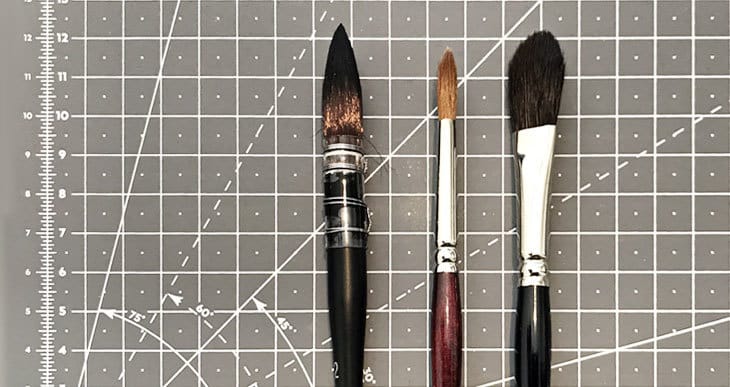
Confused about watercolor brush sizes?
Watercolor brushes come in a confusingly wide range of sizes, shapes, and materials to choose from. One of the most bewildering characteristics of brushes is their size. What do all those numbers mean? 000 or 3/0 or even 1/64”?
Brushes are the tools that you use to communicate your artistic ambitions onto the paper. And good watercolor brushes are expensive. So it’s well worth taking a bit of time to understand your tools.
In a nutshell… Brushes are sized according to a numbering system. The most common brush sizes range from 000 (small) to 24 (large). But there’s a little more to it than that. Not all watercolor brush types use this numbered rule!
To help make things clear in your mind I’ve put together this watercolor brush size chart – It’s available to download as a PDF at the end of the article… But before we get to that, let me explain a few technicalities.
The Anatomy of Watercolor Brushes
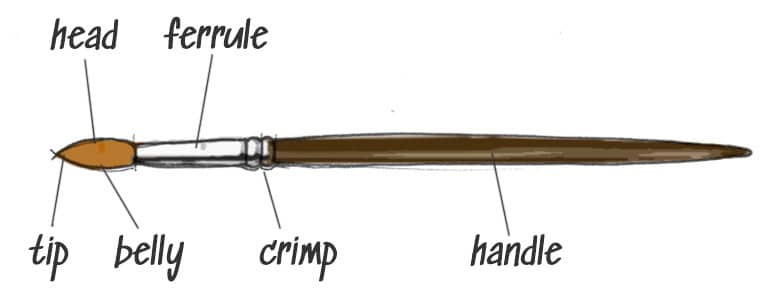
Brushes are made up of three main parts. First comes the head (sometimes known as the tuft). The head is made up of bristles or hair and includes a belly and a tip. In watercolor painting, the belly is important because this part holds the water. With a good watercolor brush you have to recharge your brush less often, and in turn, this provides a more fluid and continuous brushstroke. The tip should provide a sharp point which springs back naturally.
The head is held in place by the ferrule. The ferrule is a metal collar which needs to be well constructed to prevent the hairs from falling out over time. This is also the part of the brush that you hold, so it should be comfortable. Low-quality brushes have a seam because they’re made from folded metal. This is a cheap fabrication method and I always avoid brushes like this. The ferrule also does the job of protecting the wooden handle from moisture. It’s attached to the handle by the crimp.
Handles are usually made from hardwood. The handle is printed with lots of fascinating information, including the brand, reference numbers and most importantly the SIZE!
Watercolor Brush Types
There are three widespread hair types for watercolor brushes – sable, squirrel and synthetic. Sometimes you’ll find less expensive brushes with a mixed combination of hairs. You will also come across a wide variety of different shapes which are used for different techniques. The two most common shapes are round and flat. Below is a quick summary of the most frequently sold brush shapes, and a brief description:
Just so you know, this list is not exhaustive. But why am I talking to you about shapes ? The point to remember is this… As mentioned above, brushes are classified by numbers. But, the numbered brush sizes do not apply to all shapes of brushes. The number system applies almost exclusively to ROUND and FLAT shapes of brushes. Other shapes of brushes are generally sized by their width and length.
When it comes to flat brushes, half of the time you will be given the size of the brush in terms of measurements. Just so you know what these mean, the length of the brush normally refers to the distance from the tip of the brush to the edge of the ferrule, where the ferrule ends and the hair begins. The width of the brush refers to the distance across the flat ferrule, at the exact point where the ferrule meets the hair.
Brush Sizing
Did you know that Her Majesty Queen Victoria had a favorite size of watercolor brush ?
The No. 7 …
But you don’t have to be of royal blood to have a preference…
Unfortunately, brush sizes do not follow an internationally imposed measuring standard. Sizes for round and flat brushes are defined according to a numbering system which can range from 0000 to 50. But these are the extremes. Personally, I have never seen a No. 50 brush! Even if I did, I wouldn’t be able to afford it!
The numbers usually identify the relative sizes of brushes within the same type of brush and by the same manufacturer.
This numbering system is fairly standardized, but sizes can vary slightly from one manufacturer to another. For example, a No. 10 brush from Winsor & Newton may not be exactly the same size as a No.10 brush by da Vinci.
The Confusion arises because the sizing and numbering of round and flat brushes can be expressed differently from one brand to another.
For example, the smallest brush size is the No. 0000. But this can also be expressed as 4/0 (4 zeros). Just to make things even more baffling, a manufacturer might also add a measurement. So a 4/0 brush is approximately equivalent to 1/64” or 0.4mm (oh yes depending on where you are in the world, you’ve got imperial or metric measurements!)
Confused yet ?
Don’t worry. Below is a chart which gives you a visual reference for the different sizes of brushes. This chart is based on the manufacturers’ information that I was able to verify and should be considered as a guide to relative sizes of watercolor brushes. Unfortunately, because sizes vary slightly from brand to brand, the chart lacks precision… But I hope it helps!
Watercolor Brush Size Chart
Round Brush Sizes ( From Small to Large )
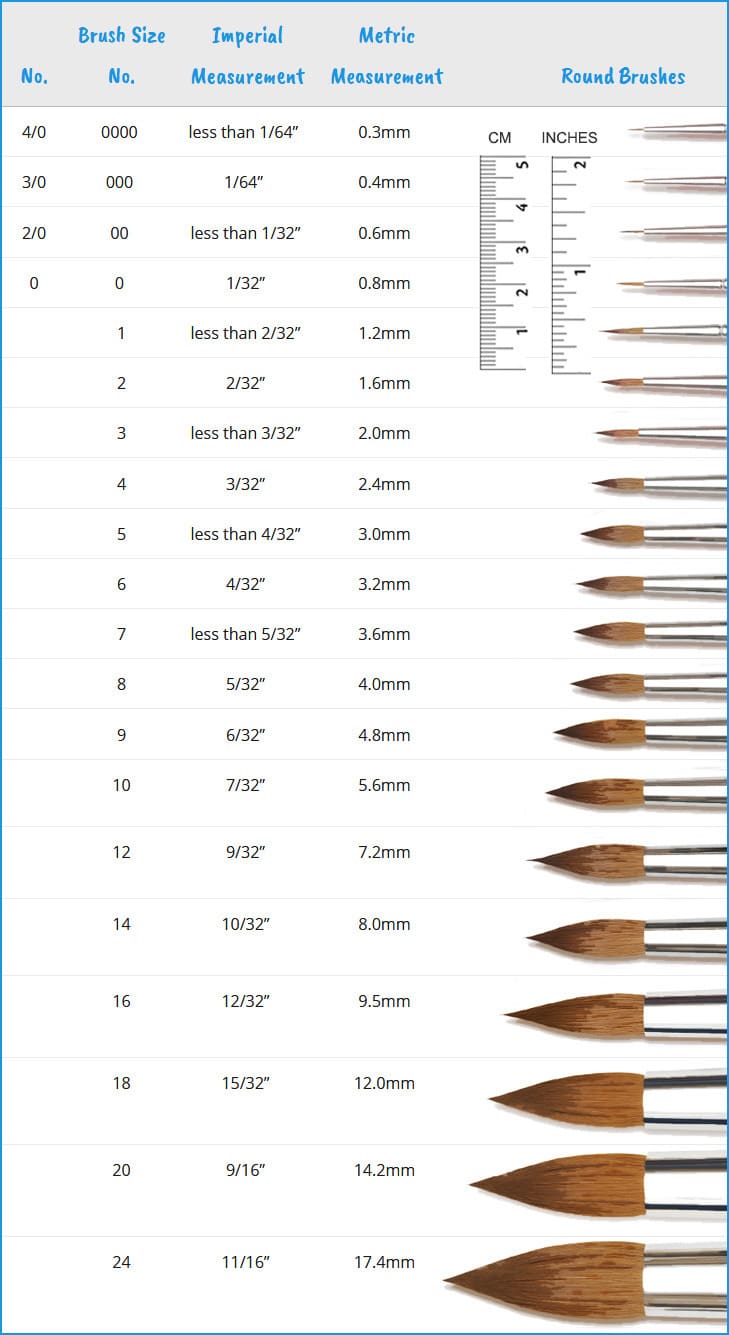
You may also notice that small brush sizes increase by increments of 1 (for example 1, 2, 3… etc.). When you reach size 10, larger brush sizes increase by increments of 2 (10, 12, 14… etc.). This isn’t an oversight. All of the brush manufacturers that I compared, size their brushes this way. I imagine this is for reasons of economy.
You will find that the size of the handles on watercolor brushes is smaller than brushes used for other medium, such as oil or acrylic. This is because a lot of watercolor projects are on a small scale and require detailed work. The watercolorist holds the brush by the ferrule to achieve greater control, so a large sized handle is not needed.
Flat Brush Sizes ( From Small to Large )
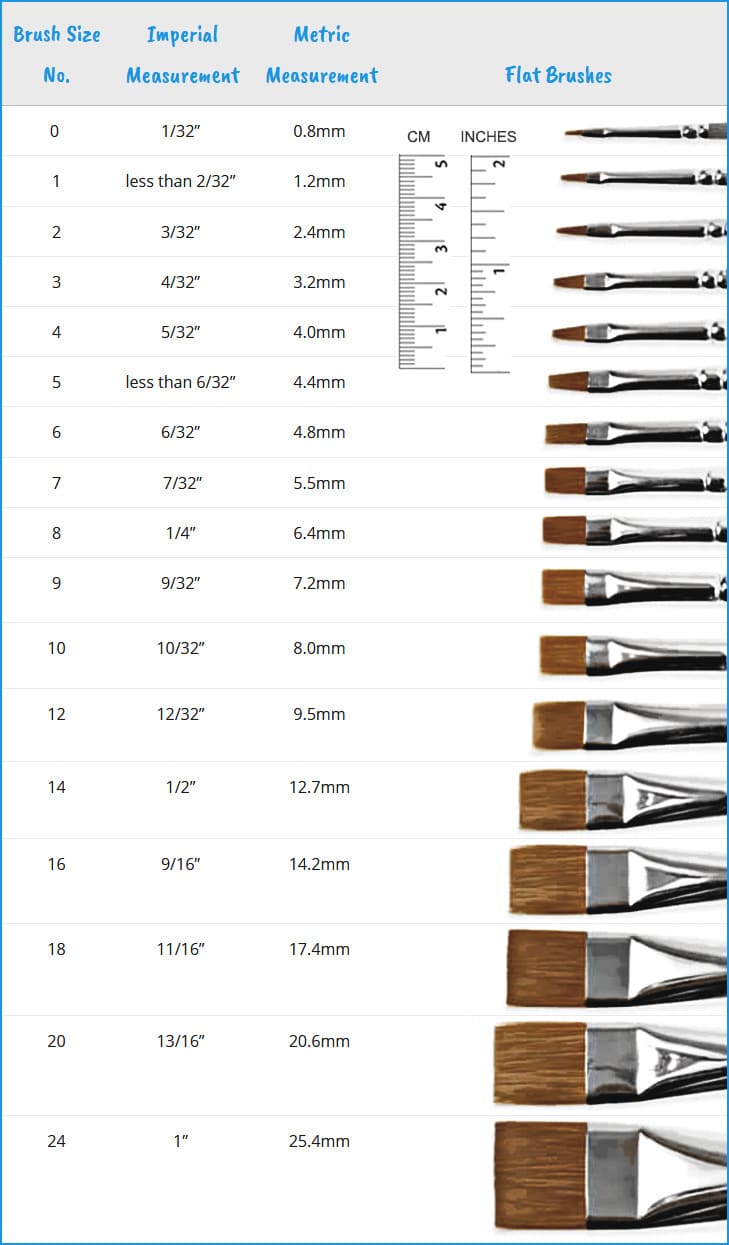
What Size Watercolor Brushes do I Need?
You won’t need every size of brush! The best way to begin is to get a limited number of versatile brushes capable of performing a wide range of techniques. Consider detail work, wash work, and effects.
Midsize round brushes are the most versatile. Smaller round brushes will be needed for detailed work and a large brush is good for broad strokes. So a selection of round brushes will give you the best value (small, medium and large).
Also, it’s a bit slow and inconvenient to paint a whole painting with just round brushes, so for this reason it’s a good add some flat and wash brushes to your collection.
Brushes need to be good quality because they should hold their shape, hold a good amount of paint or water in their belly, be able to maintain a point, and distribute the medium smoothly.
Good brushes are expensive – but if you choose your brushes carefully they will last for a very long time!
To quote Jacques Turner, from his book “Brushes: A Handbook for Artists and Artisans”:
Most artists are not fully aware of the influence the quality of their brushes has on the work they do…. It is very difficult to obtain good results using badly made brushes. I have met beginners who were convinced that they lacked ability because they were unable to produce certain painting effects, when in reality their failure was the direct result of the inferior brushes they were attempting to use.

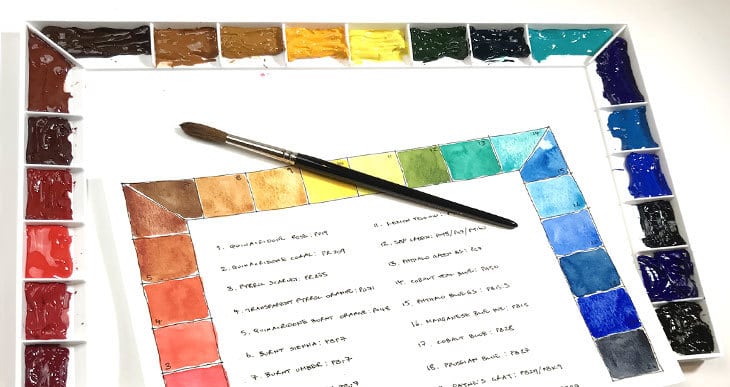
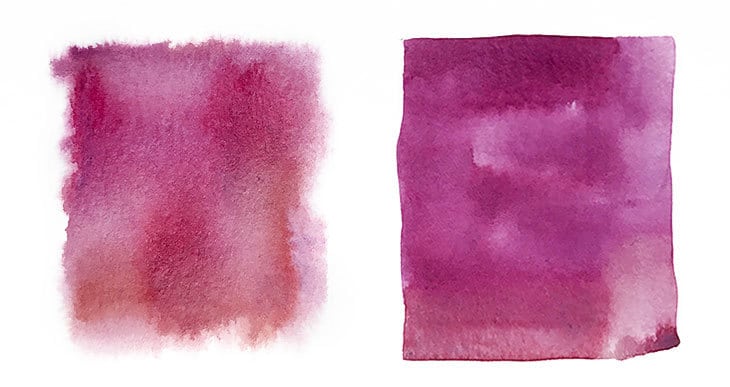
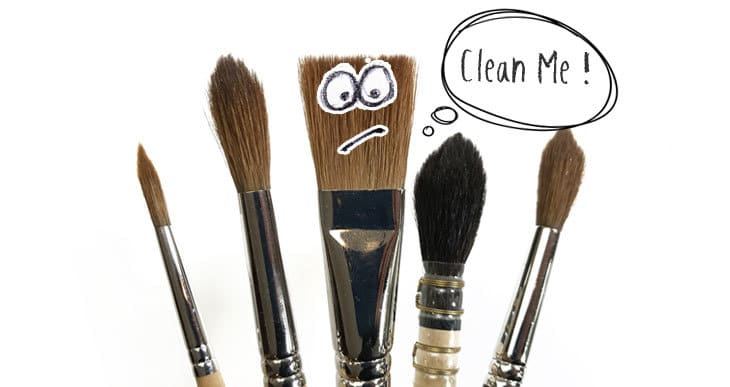
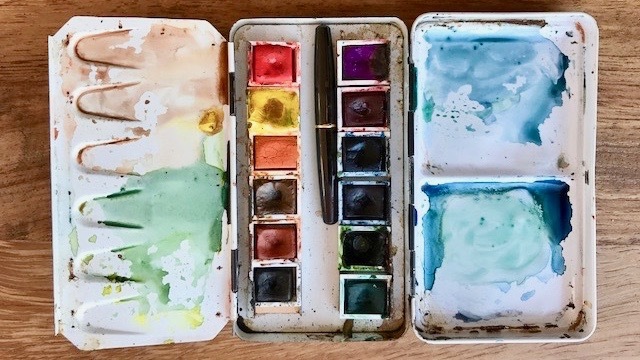
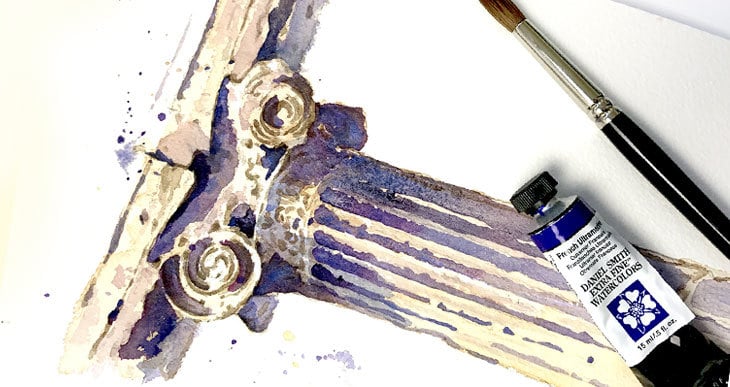
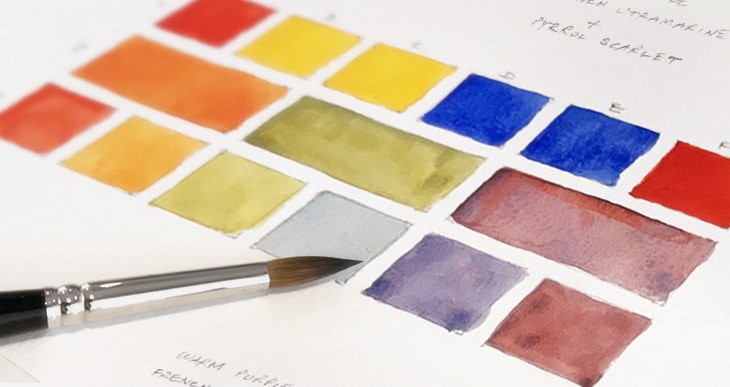
Thank you for all your information and help. So much information to take in.
THANK YOU so much for your wisdom of watercolor. I teach art to older adults, and your news letters are so informative I even learn from them. My students love doing the Demos!
Once again, THANK YOU
You’re very welcome Helen !
Happy to help…
Extremely comprehensive and useful information! Every beginner needs to read it before buying brushes! Many thanks!
I have way too many brushes ! It started over 20 years ago when I didn’t know what I was doing, bought a lot online, and still do, my favourites are rosemarys brushes, they are good, decent price and the catalogue shows them at life size. Other makes are available !
My kolinsky sable are rather old and still really good.
Just bought my first ever quill type mop, good fun, plus some sword liners which are useful for ageing wobbly hands !
Just a note, a lot of effects can be down to paper, cotton rough will achieve different marks to a smoother wood based paper. I know beginners blame themselves or the brushes when the paper does make a big difference too.
Great site, lots of interesting articles, my paint palette is arranged rather randomly compared to yours, decidedly haphazard in fact, but I am used to it now , at least we use the same brand. Kind regards
I love Rosemary’s brushes too… thank you so much for your insights Helen !
Thanks for all the info it was lots of help.
You’re more than welcome Anthony!